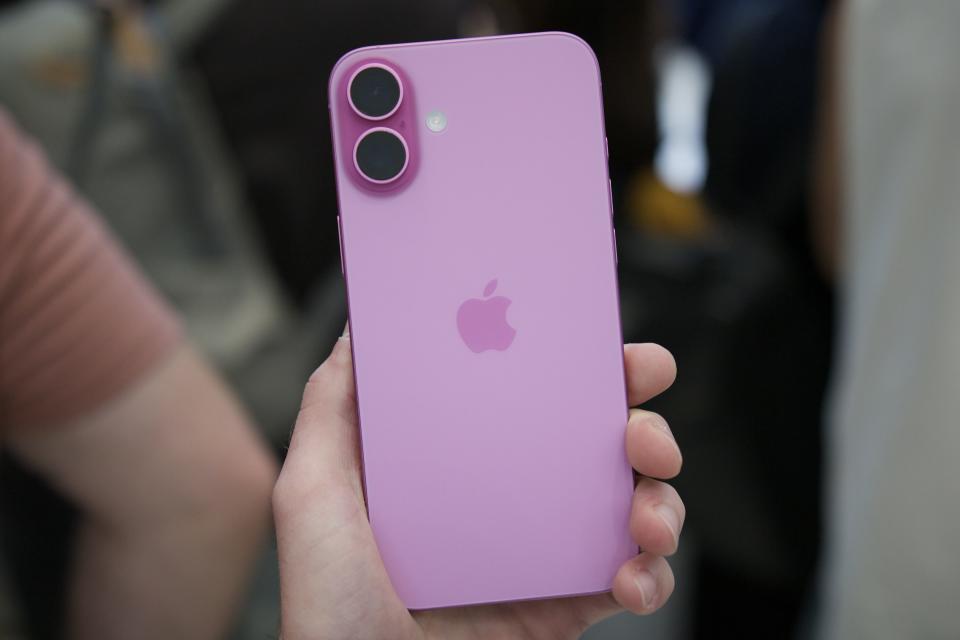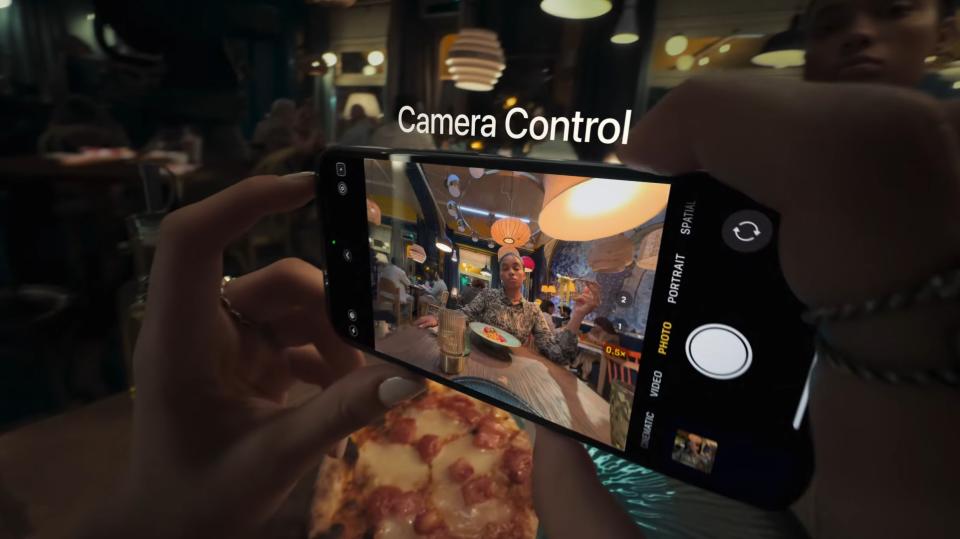Apple’s biggest event of the year has come, and the iPhone 16 and iPhone 16 Plus have landed. As expected, these represent the best that Apple offers non-Pro users, but unlike last year, many features help the iPhone 16 stand out and bridge the gap between these two devices and the iPhone 16 Pro and 16 Pro Max.
Should you buy the iPhone 16 or iPhone 16 Plus? Do you still need a Pro-phone to get the Pro experience? How do this year’s models stack up? Here’s everything you need to know about the iPhone 16.
iPhone 16 and 16 Plus: price and release


Apple’s iPhone 16 and iPhone 16 Plus come in five colors: Ultramarine, Teal, Pink, White, and Black.
The iPhone 16 starts at $799 with 128GB of storage, while the iPhone 16 Plus is $100 more at $899 with the same storage. Both phones have trims with 256GB or 512GB of storage, which cost $100 or $200 more than the base price. Unlike the iPhone 16 Pro series, there’s no 1TB of storage option.
Like many of the best phones, the best iPhone 16 deals can be had when you trade in an existing iPhone. Apple revealed that you can secure up to $800 off when you trade in and activate via its website.
iPhone 16: specs
|
iPhone 16 |
iPhone 16 Plus |
|
|
Dimensions |
147.6 x 71.6 x 7.8 mm (5.89 x 2.81 x 0.32 inches) |
160.9 x 77.8 x 7.8 mm (6.33 x 3.06 x 0.31 inches) |
|
Weight |
6.00 ounces (199 grams) |
7.03 ounces (199 grams) |
|
Display |
6.1-inch Super Retina XDR OLED display |
6.7-inch Super Retina XDR OLED display |
|
Durability |
IP68 |
IP68 |
|
Colors |
Black, White, Pink, Teal, Ultramarine |
Black, White, Pink, Teal, Ultramarine |
|
Processor |
A18 |
A18 |
|
Storage |
128GB, 256GB, 512GB |
128GB, 256GB, 512GB |
|
Software |
iOS 18 |
iOS 18 |
|
Updates |
Seven years of promised upgrades |
Seven years of promised upgrades |
|
Rear cameras |
Fusion: 48megapixel, f/1.6 aperture |
Fusion: 48MP, f/1.78 aperture |
|
Front camera |
12MP, f/1.9 aperture |
12MP, f/1.9 aperture |
|
New camera features |
Anti-reflective lens coating 4K Dolby Vision video recording at 24 fps, 25 fps, 30 fps, 60 fps 1080p Dolby Vision video recording at 25 fps, 30 fps, 60 fps |
Anti-reflective lens coating 4K Dolby Vision video recording at 24 fps, 25 fps, 30 fps, 60 fps 1080p Dolby Vision video recording at 25 fps, 30 fps, 60 fps |
|
Battery |
Up to 22 hours of video playback |
Up to 27 hours of video playback |
|
Charging |
Up to 50% charge in 30 minutes with 20W adapter |
Up to 50% charge in 30 minutes with 20W adapter |
|
Connectivity |
5G, Wi-Fi 7 (802.11be), Bluetooth 5.3, VoLTE, NFC |
5G, Wi-Fi 7 (802.11be), Bluetooth 5.3, VoLTE, NFC |
|
Price |
Starting at $799 |
Starting at $899 |
iPhone 16: hands-on


We’ll dive into everything you need to know about the iPhone 16 below. But what is it like to use Apple’s latest iPhones?
Thankfully, we had an opportunity to find out. We got to use all of the new iPhone 16 models, and first impressions are very good. The designs and colors are lovely, and Apple’s new Camera Control button is a dream come true. We need more time with the phones before forming deeper opinions, but things are off to a good start.
iPhone 16: design and display


Although the iPhone 16 and 16 Plus feature the same 6.1-inch and 6.7-inch Super Retina XDR OLED displays as last year, the maximum brightness has been significantly improved to 2000 nits under peak conditions. This should result in significantly better outdoor visibility in direct sunlight, while one nit for the lowest brightness means they won’t blind you at night.
The iPhone 16 and 16 Plus add the Action Button found on last year’s Pro iPhones and include a new Camera Control button. Instead of tapping on the screen, this new button allows you to adjust various camera features by sliding your finger on it.
As part of Apple Intelligence, the new Camera Control button helps you access Visual Intelligence. Click and hold the button, point your iPhone, and your iPhone can look it up. Looking at a restaurant? Find the reviews in seconds. Have you seen a bike you like? Just tap and search Google, where you can buy something similar. Are you stuck while studying? Use the Camera Control button and ask ChatGPT. Visual Intelligence will be added to the Camera Control button later this year.


The Camera Control button revamps the camera experience on the iPhone 16 and iPhone 16 Plus. It can be used in horizontal or vertical positions. It lets you launch the camera with a single press and slide on the button to adjust the zoom. A capacitive sensor underneath enables it to recognize touch gestures and distinguish between a full click and a lighter press; the latter will help you frame that perfect photo.
It’s designed to make your iPhone camera more like a traditional camera and seems to deliver in spades.
iPhone 16: hardware and software


Apple’s big claim is that the iPhone 16 series has been built from the ground up to support Apple Intelligence and all its features. These include everything from generative AI features, such as creating media, to providing summaries, recalling information, and a more conversational Siri with much deeper app integration.
The iPhone 16 and iPhone 16 Plus are powered by the 3nm Apple A18 chip. This marks the first time that the non-Pro iPhones are powered by a processor with the same technology standard as the 3nm A18 Pro chip inside the iPhone 16 Pro and Pro Max. This is key to enabling Apple Intelligence thanks to a much better Neural Engine over last year’s A16 chip, but it also means there is less to choose between the Pro and non-Pro iPhones this year.
The A18 chip features a six-core CPU with two performance cores and four efficiency cores and is designed to be up to twice as fast for on-device machine learning. It’s up to 30% faster than the iPhone 15 and has a desktop-class five-core GPU up to 40% faster than the GPU in the iPhone 15. Significant performance gains were found over last year’s chip, and this should mean that even the cheapest current-gen iPhone features an extremely powerful processor.


An updated thermal design and new thermal substructure enable an elevated gaming experience with up to 30% higher sustained performance for gaming and hardware-accelerated ray tracing. This means that games like Resident Evil 7 and Assassin’s Creed Mirage — previously only available on iPhone 15 Pro phones — can now run on the non-Pro iPhone 16 series.
Apple has also officially entered the battery charging specs race, with the iPhone 16 and 16 Plus representing the fastest charging ever on an iPhone. They offer 25W charging via a MagSafe or Qi2 and up to 20W via a wired USB-C cable. This should mean you can charge to 50% in under 30 minutes with an expected battery life of up to 27 hours on the Plus (and 22 hours on the regular iPhone 16). As with all claims, we’ll have to see how they deliver in our review.
iPhone 16: cameras and features


The 48MP primary camera has been vastly improved over previous years and now uses the Fusion branding. It uses pixel binning to capture 24MP high-resolution photos and crops the middle 12MP sensor to provide a 2x telephoto zoom with a faster aperture than any previous dedicated 2x telephoto camera on an iPhone.
The new 12MP ultrawide sensor adds autofocus and enables macro photography with the latest iPhone 16 and iPhone 16 Plus. The camera upgrades also mean that non-Pro iPhones can capture spatial photos and videos for Apple Vision Pro, a feature exclusive to the iPhone 15 Pro and Pro Max last year.

Both iPhones also support Audio Mix, which allows users to adjust the sound after capturing a video with different effects. Depending upon your artistic style, you can either focus on the audio from the subject, make the recording sound like it was captured in a professional studio, or position vocal tracks in front of you while using the environmental sounds around you.
This year’s iPhone 16 and 16 Plus choose to bridge the gap to last year’s Pro models, bringing many features that cost several hundred dollars more last year to the base model iPhones. The result is the most Pro-like non-Pro iPhones ever made, arguably some of Apple’s best iPhones to date.
Buy at Apple
